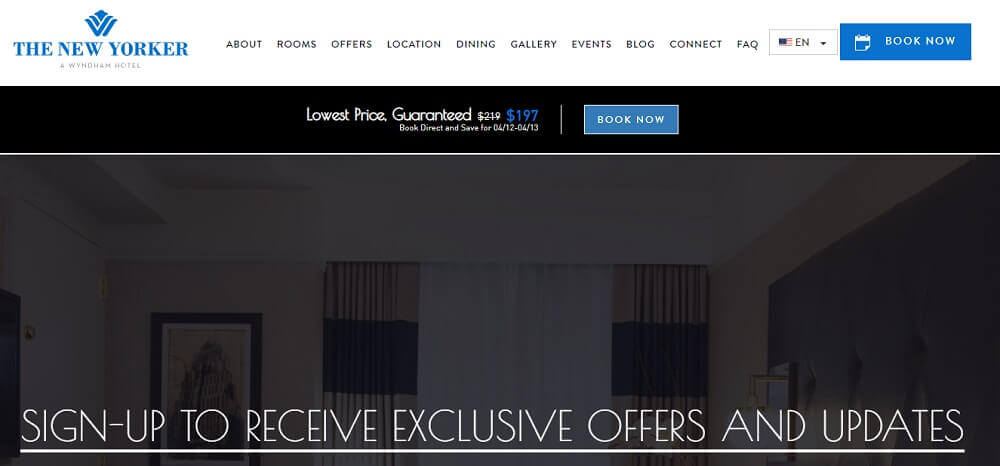
Once every few years, a new technology comes along that surprises and delights us. We’ve seen this over and over again in consumer technology with smartphones, voice assistants, and so much more. In hotel tech, the story is the same.
NB: This is an article from Travel Tripper
Just recently, we held a webinar with thought leaders from StayNTouch, and OTA Insight. We discussed the opportunities hotels have to adopt revolutionary new products that can help deliver record direct revenue. Topics included:
- How to optimize your pricing and maximize revenue opportunities with smarter, next-level revenue strategies.
- Ways in which your hotel can achieve record direct revenue, personalize the guest journey, and level the playing field with OTAs.
- How to capitalize on ancillary and incremental revenue opportunities during check in/out while heightening guest satisfaction.
Listen to our webinar to gain all of the key insights, and read on to learn some of the most interesting takeaways.
Use better insights to drive revenue
Big data has become a powerful tool for the tech-savvy hotelier. Harnessed in the right way, it can help to identify customer buying behaviors, enhance their on-property experience, and drive revenue. But there’s a problem.
Hotels often have so much data that it leads to ‘analysis paralysis’. With too many systems, too many spreadsheets, and too much data, it’s incredibly hard to take decisive action.
Collating and interpreting vast amounts of data also takes considerable time. And that time is often wasted — the detailed Excel spreadsheets Revenue Managers create often don’t get read.
In addition, certain hotel practices make it hard to predict guest behavior with real accuracy. For example, if your hotel routinely drops its prices to sell rooms last minute, the bookers you attract may only have a couple of days lead time. The ability to anticipate their booking behavior becomes greatly diminished.
So, what’s the solution?
How to make better use of data
To identify the most important data and make faster decisions, hotels need simpler reporting and better analytics. This task might seem challenging given the array of performance analytics a hotel must consider:

Having so much data can be highly advantageous. But there needs to be an efficient way to consolidate this information into a digestible form — that avoids ‘analysis paralysis’ and allows immediate insights into revenue and booking data.
Strategize instead of analyze
How many hours does your hotel spend compiling reports and analyzing data? The entire process can be simplified through automation.
OTA Insight has a tool that can display all of the hotel’s data in a single interface. It lets you click on different KPI reports (such as Room Nights, ADR, and Revenue), and analyze booking patterns and lead times, comparing these with dynamic time periods.
Immediately, you can compare the type of business that came in over any customized period vs. a reference period. This allows you to clearly identify key business drivers helping you to make faster, smarter decisions.
Achieve record direct revenue, personalize your guest journey, and level the playing field with OTAs
Today’s guest is more demanding than ever, and hotels face constant competition from the OTAs. One of the major reasons the likes of Booking.com and Expedia are so successful is their superior user experience. They’ve developed a highly effective formula to maximize revenue and deliver incredible convenience to customers.
In contrast, many hotels rely on brochureware websites. These websites might look pretty, but they don’t know anything about the user or the price of the hotel. Often, they’re disconnected from the booking engine, creating a clunky user experience.
This experience is so ubiquitous as to be almost an accepted industry norm. But it shouldn’t be. And it’s only when you make comparisons with the modern e-commerce experience that the flaws in these brochureware hotel websites are glaringly apparent.
Imagine visiting the Amazon website and seeing products without prices. Imagine having to click on a product to find that price, only to be taken to a separate e-commerce engine that looked different from the main website. It wouldn’t fill you with confidence to buy. And you might end up taking your long-term business elsewhere.
This experience is what many people face when they try to book on a hotel website. Clearly, something has to change.
The evolution of the hotel website
The brochureware website is long overdue for an upgrade. It’s time for a new generation of hotel websites that are contextually aware. These websites understand a guest’s booking intent, serve relevant offers and messaging, and instantly display real-time rates to drive conversions.
At Travel Tripper/Pegasus, our Conversion Plus tool offers this exact experience. It can analyze a user’s search history, behavior, device, and geography, and then dynamically tailor marketing messages. This means every user has a unique experience on the hotel website.
In addition, Conversion Plus automatically price checks with OTAs, and it can match or beat lower OTA rates to encourage direct bookings. As you can see, these prices are made instantly visible, and bookable, on the hotel homepage:


The future of hospitality: marketing with mobile
To capture additional revenue from consumers, context is everything. You have to engage them with the right message, in the right place, at the right time. Mobile lets you do this. Using comprehensive data on guest preferences and habits, it can deliver automated, in-the-moment sales pitches that increase conversion rates.
Let’s say a corporate traveler is due to check-in to your property tomorrow morning, and has a business meeting soon after arrival. If you message them on their mobile phone today, guaranteeing that they can check-in before 11am for an extra $20, they’re going to buy it.
This example illustrates the power of mobile marketing. It allows you to send targeted messages at key points in the guest journey, creating new opportunities for upselling. Not only does this help to drive ancillary revenue, it gives your guests more control and a way to customize their entire experience with you.
The benefits of mobile staff
For all kinds of reasons, traditional face-to-face upselling at check-in isn’t effective. Hotel staff are often too busy and guests often aren’t in a “buying moment” — they generally want to check-in and get to their room.
By offering mobile check-in, you can enjoy the freedom to roam the lobby and engage with guests in a more natural way. Instead of a quick upsell at the front desk, your staff can grab an iPad and casually spark up a conversation about a room upgrade or an on-property experience.
Put simply, mobile lets you remove the barrier of the front desk and interact with guests when they feel more relaxed and receptive.




